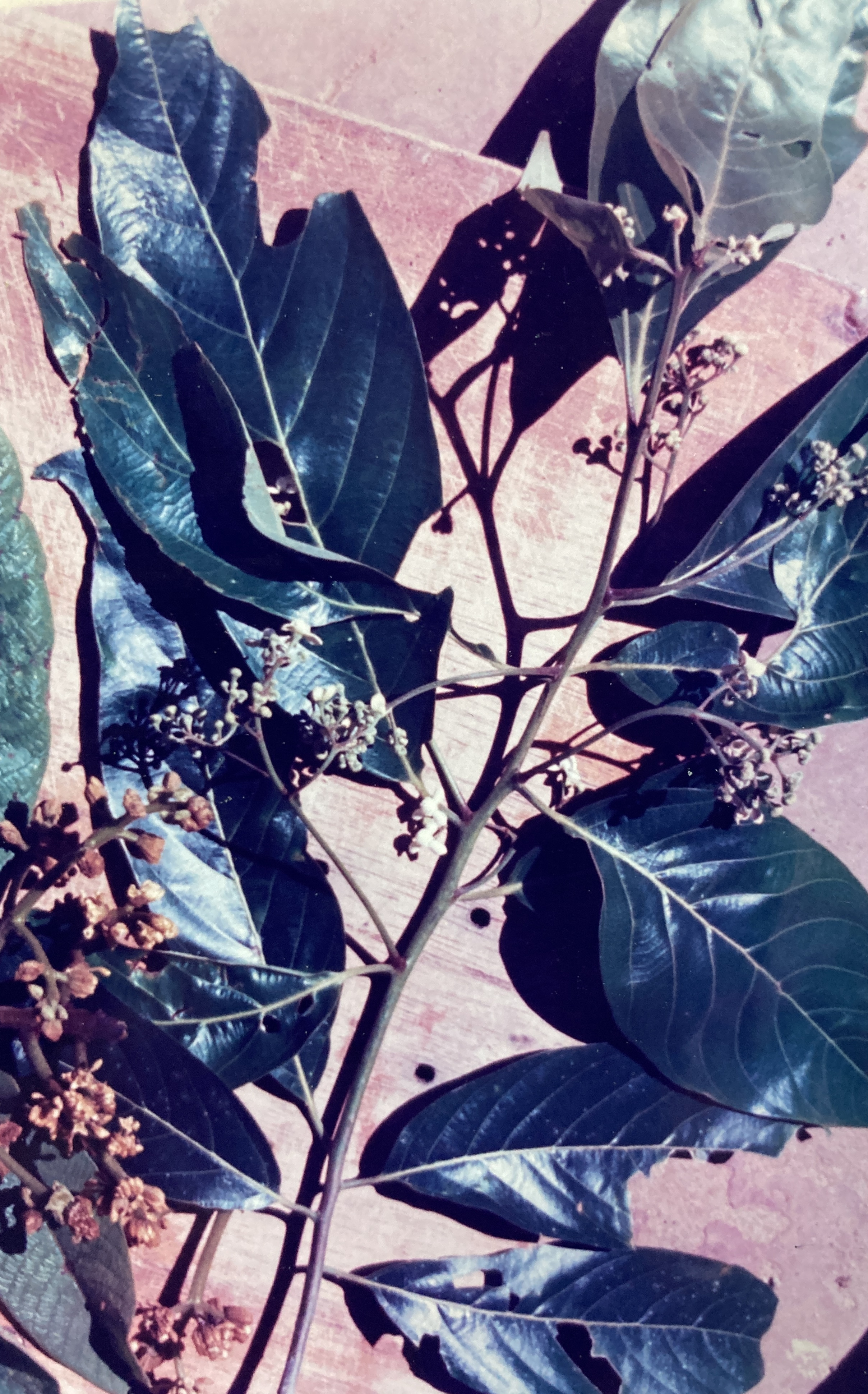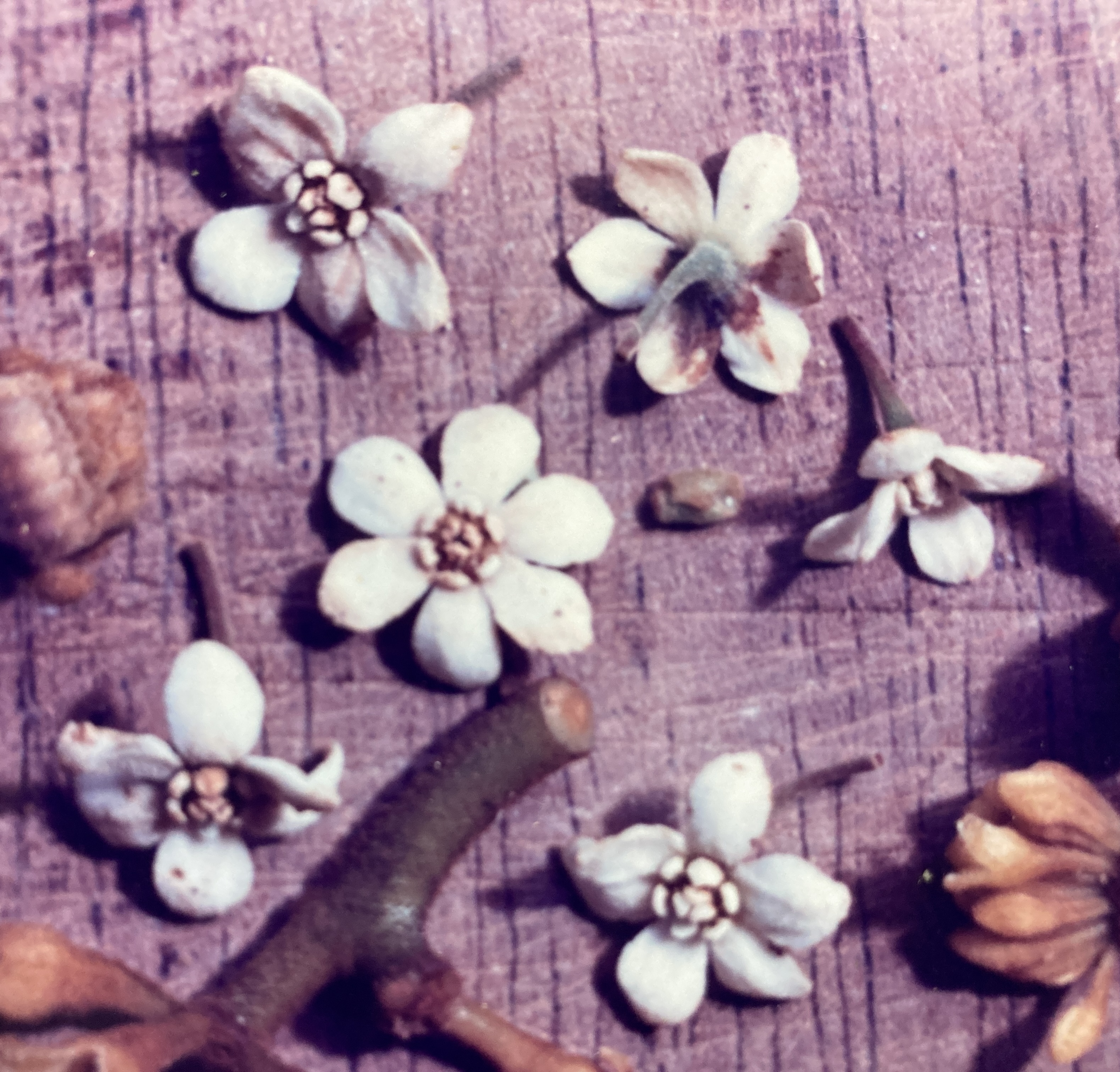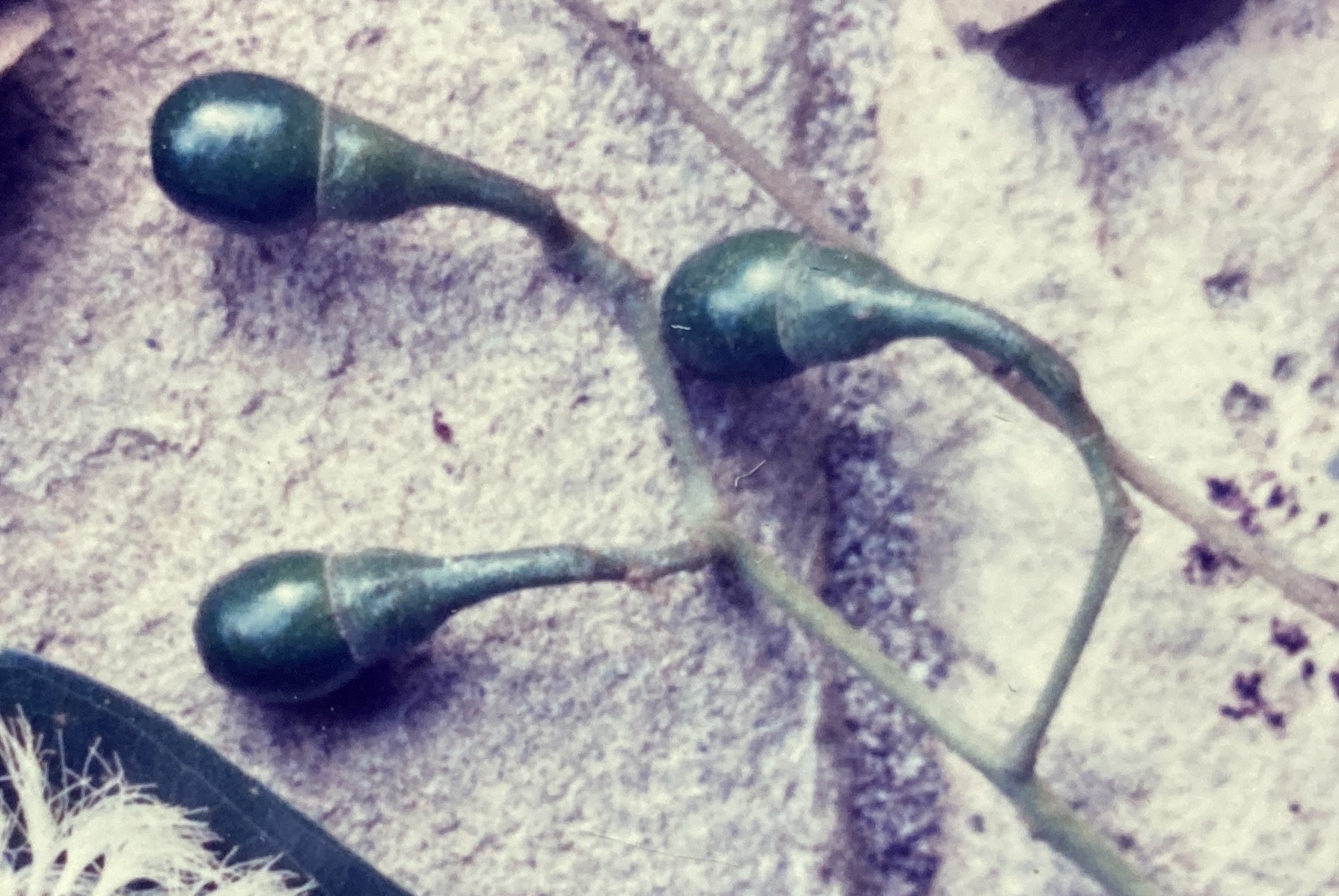Nectandra lineata (Kunth) Rohwer
Lauraceae
AGUACATILLO
Occasional understory (15 m) evergreen tree found growing in patches of secondary vegetation where direct sunlight is available. Like other “aguacatillos”, this tree is an important producer of food for many species of mammals and birds.
Description: N. lineata has a small, trunk with a circular cross section and a 20 cm diameter. The bole is straight and it is covered with thin, smooth, creme-colored bark. Branches emerge along the upper third of its length and these form a rounded, dense, though small crown. Leaves are dark-green, glossy, alternate and simple. The large blades (22 by 8 cm) – supported by 2 cm petioles – are thick and leathery, elliptical in shape, and lack well developed drip-tips. Yellowish main veins may be observed below the leaf face. New foliage is produced terminally and emerges limp and light green. Aggressive growth of twigs and new leaves occurs during the wet winter months of July through September.
Flowers (1 cm) are white, sturdy and long-lasting, occurring in large terminal or subterminal panicles. Each possesses a thick, somewhat pubescent perianth, itself consisting of three sepals and three nearly identical petals. The center of the blossom sports six short, petal-like appendages that enclose many, tiny yellow stamens. Centrally positioned, the white pistil is divided into three sections. Blossoms persist for an extended period beginning in late October and lasting through early February. Flower and fruit production occur annually, with all individuals participating.
Fruits (1 cm) become visible soon after flowering starts, and they grow into the glossy green, avocado-like, speckled drupes typical of this genus. Also typical are the cup or goblet-shaped green calyxes that envelope the inferior portion of the fruits. Borne in dense, panicles and held vertically at the ends of branches, these drupes remain exposed and visible above the tree canopy. When mature, they darken slightly and soften. Each contains a single seed. Harvests are abundant and they occur from March through May.
Similar Species: Nectandra salicifolia (see description) is a close relative of N. lineata. Of similar size, this former species also has fruits that resemble those of the latter. However, N. salicifolia‘s leaves are much the smaller of the two and its fruits are borne in vibrant, red calyxes. (See N. salicifolia).
Natural History: N. lineata flowers are bee and insect pollinated. Its fruits are avidly eaten by a very wide variety of mammals and birds, among them squirrel and white-faced Monkeys, Slaty-tailed Trogons, Bairds’ Trogons, Masked Tityras, Clay-colored Robins, and Blue-crowned Motmots. These birds feed most aggressively in the early morning (within the first hour or two of daybreak), perching on nearby branches, periodically sallying out to nab fruits while flying, and then swallowing them whole. Those seeds that survive passage through the bird’s digestive tract (or that are regurgitated) will almost surely find themselves well dispersed. The position of the fruits in the trees – high and clear of obscuring foliage – makes them more visible to potential avian consumers. This positioning is important in N. lineata particularly since its fruits lack any bright coloration. N. salicifolia, sporting conspicuous red calyxes, can afford to mingle its fruits with the crown foliage.
Uses: N. lineata, like N. salicifolia, has great importance as a food source for the mammals and birds typical of Costa Rica’s humid, Pacific slope forests.
Distribution: In addition to Manuel Antonio, this species can be found in Carara and Corcovado National Parks as well as in the Nicoya Peninsula and Limon. It ranges from Nicaragua to Colombia and Ecuador.




